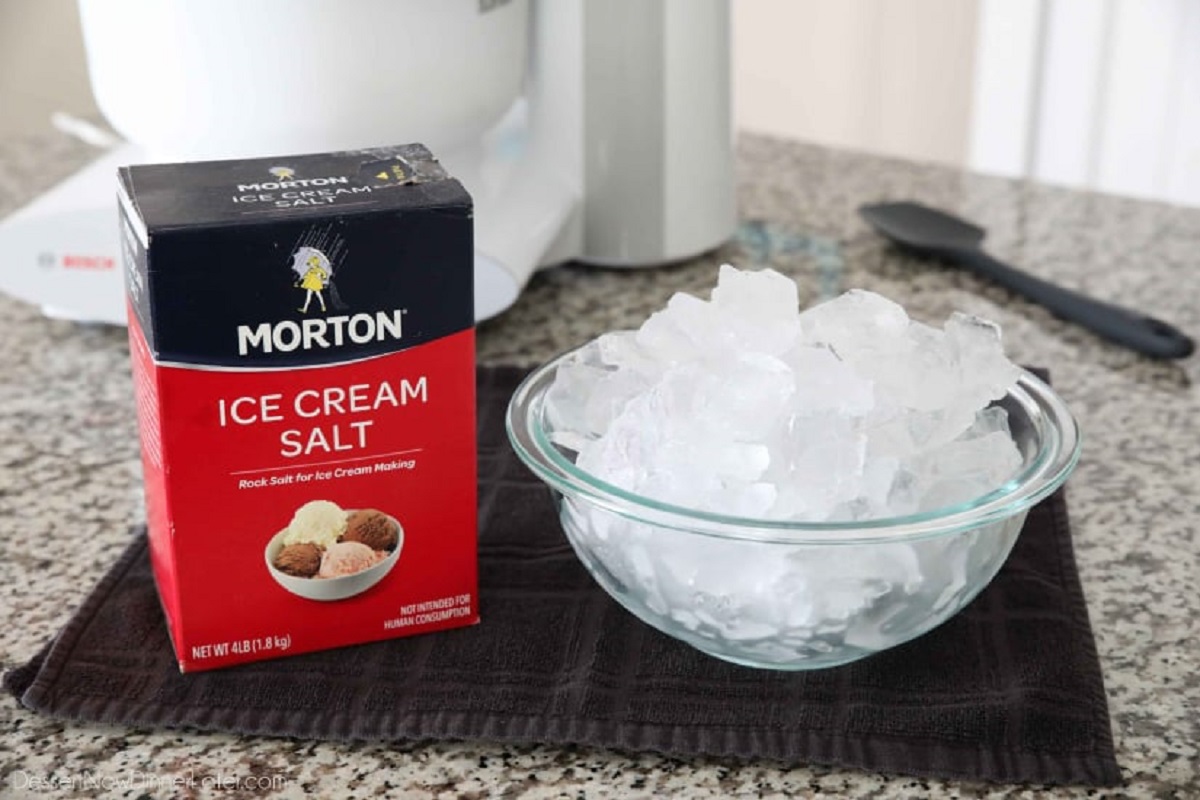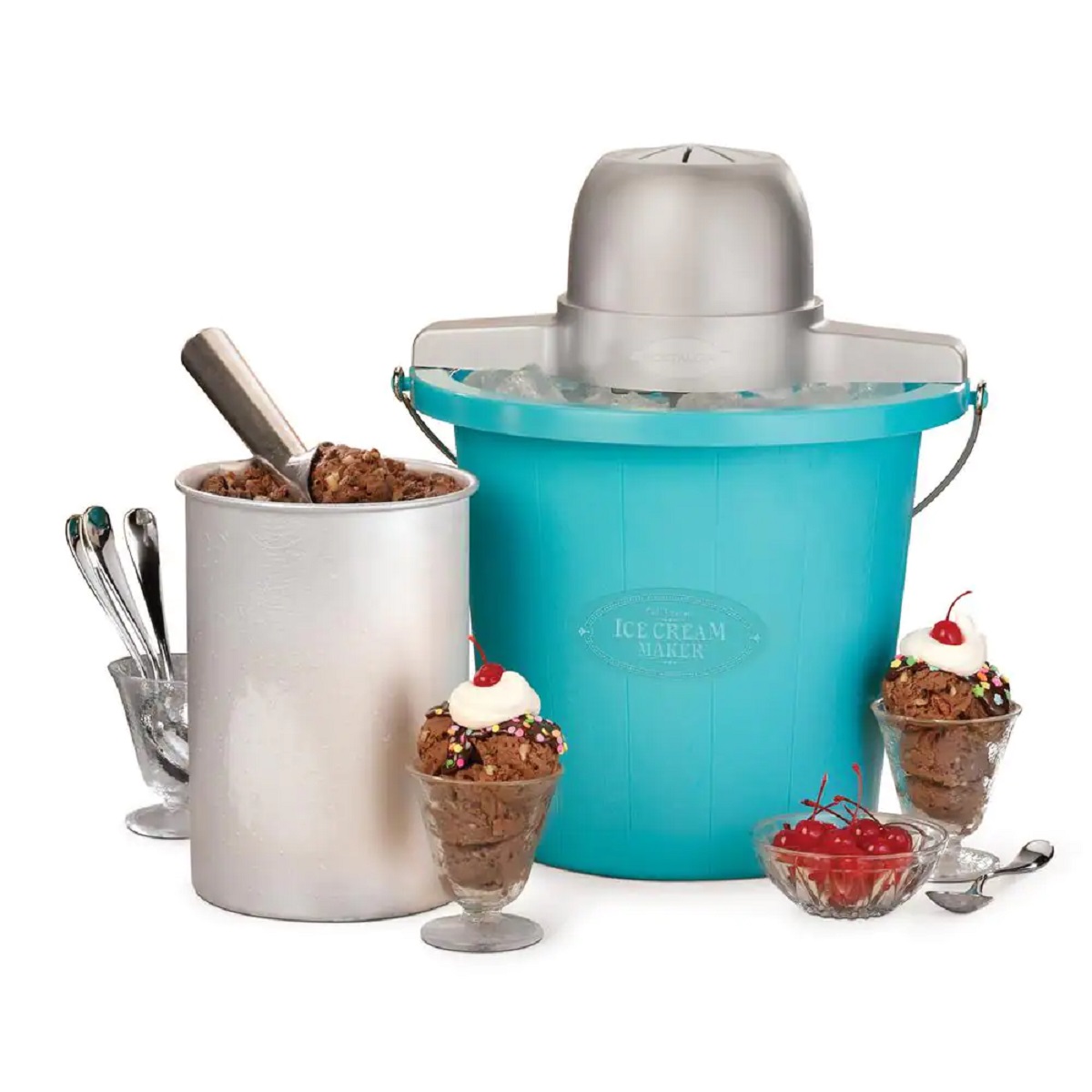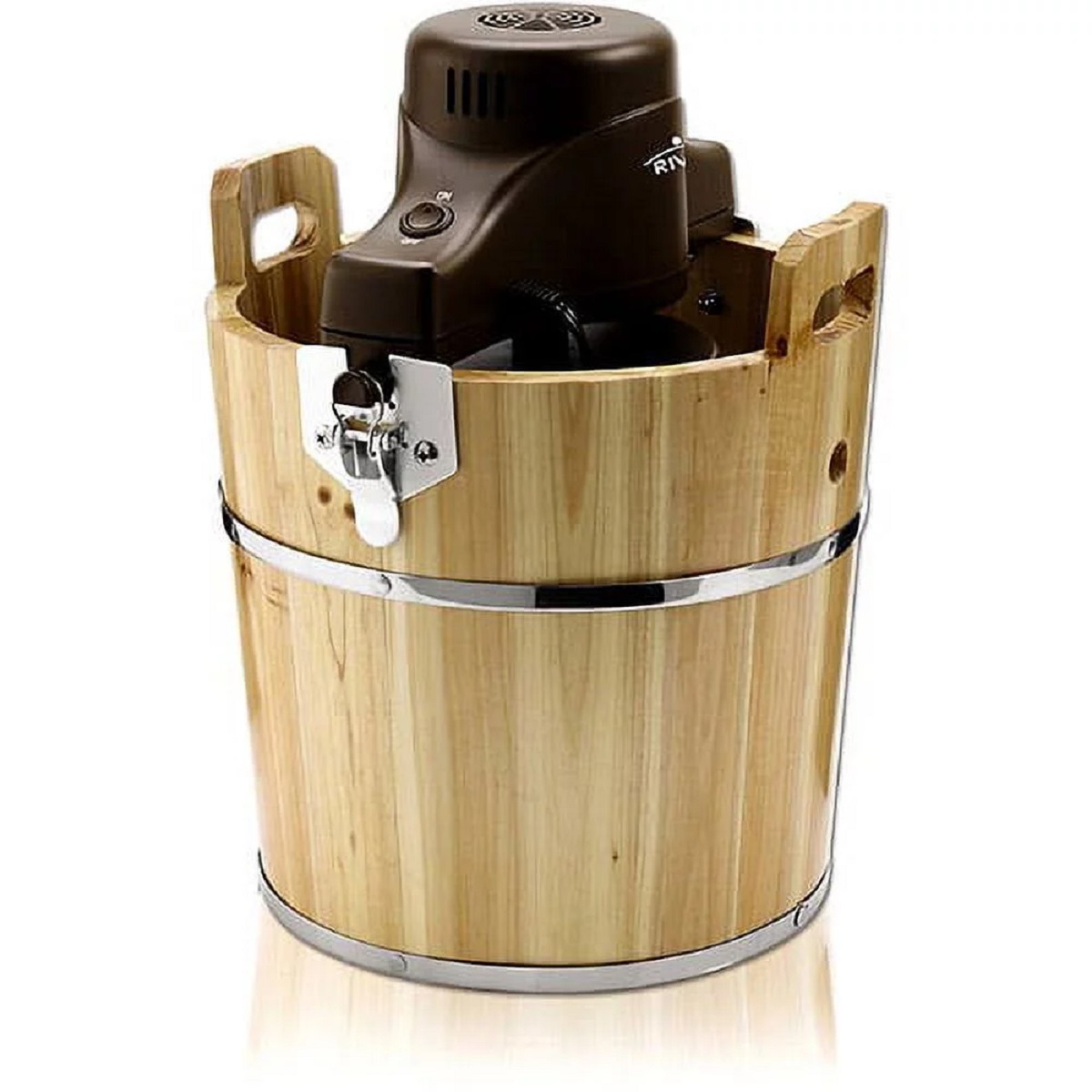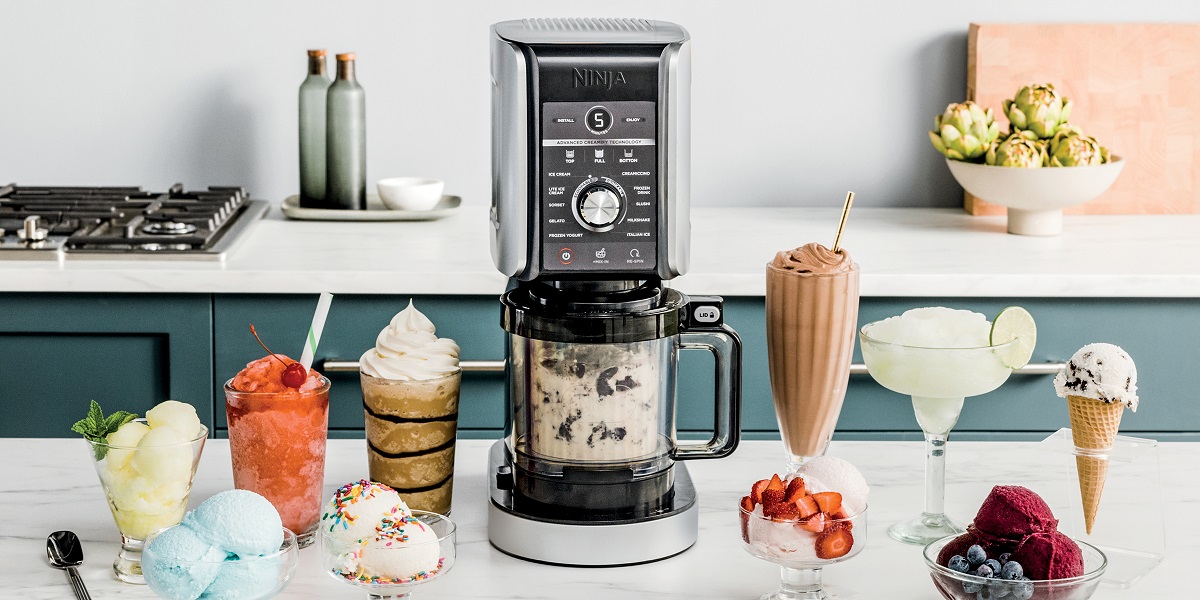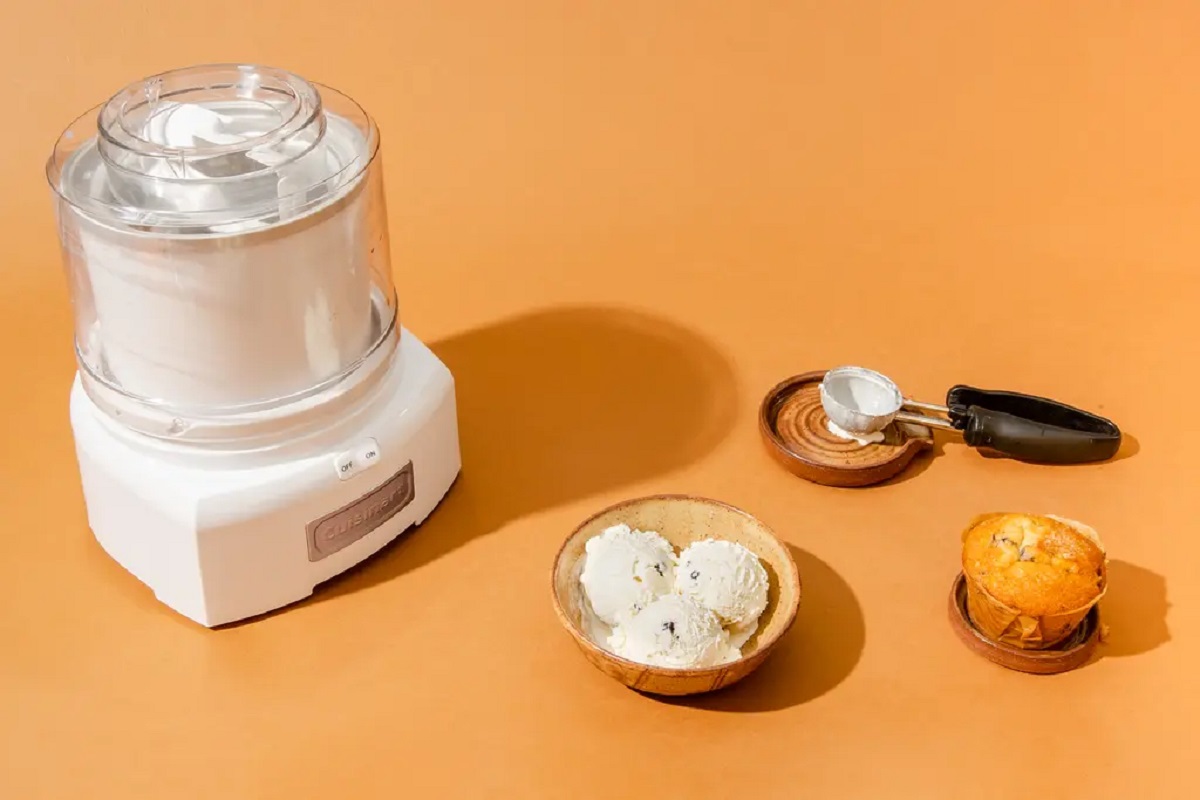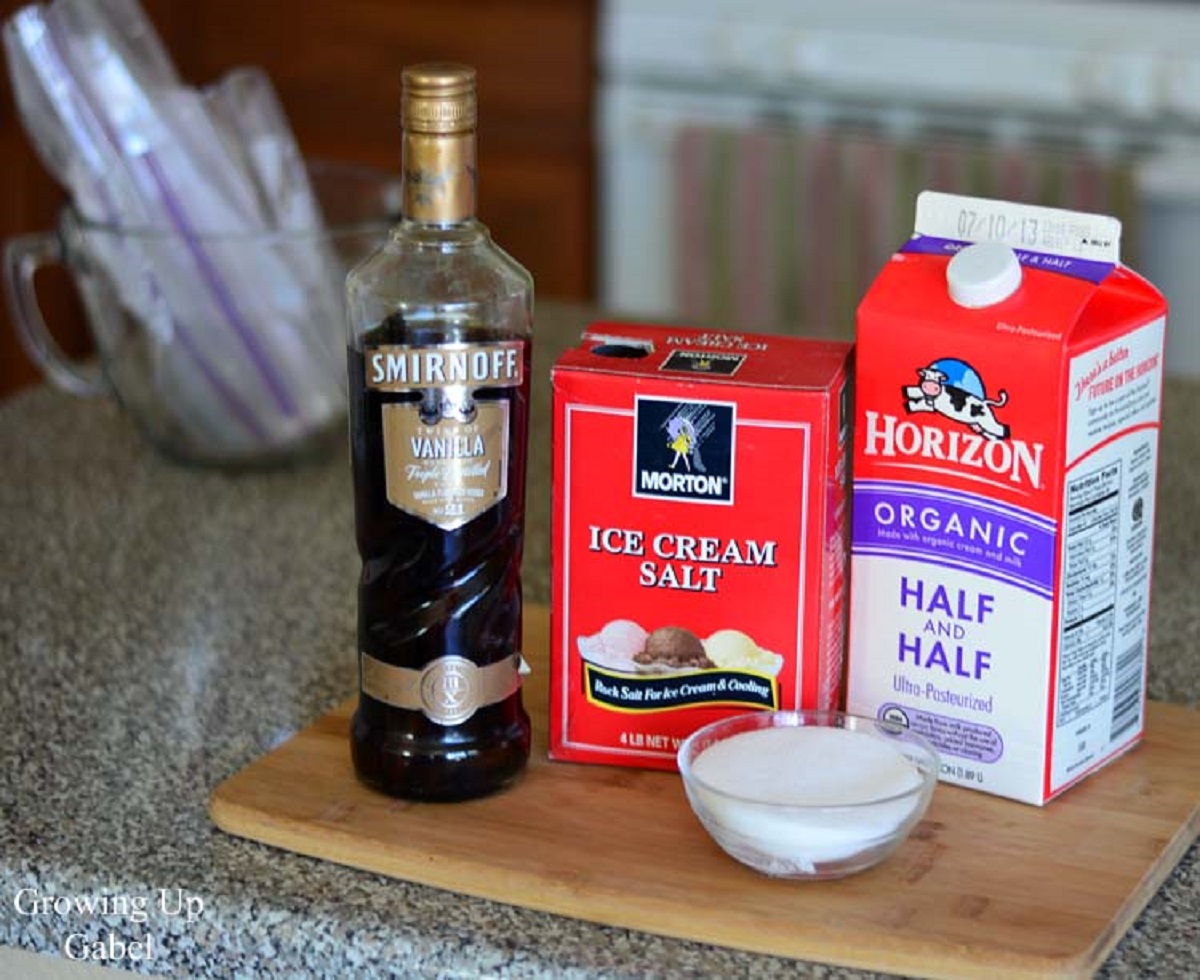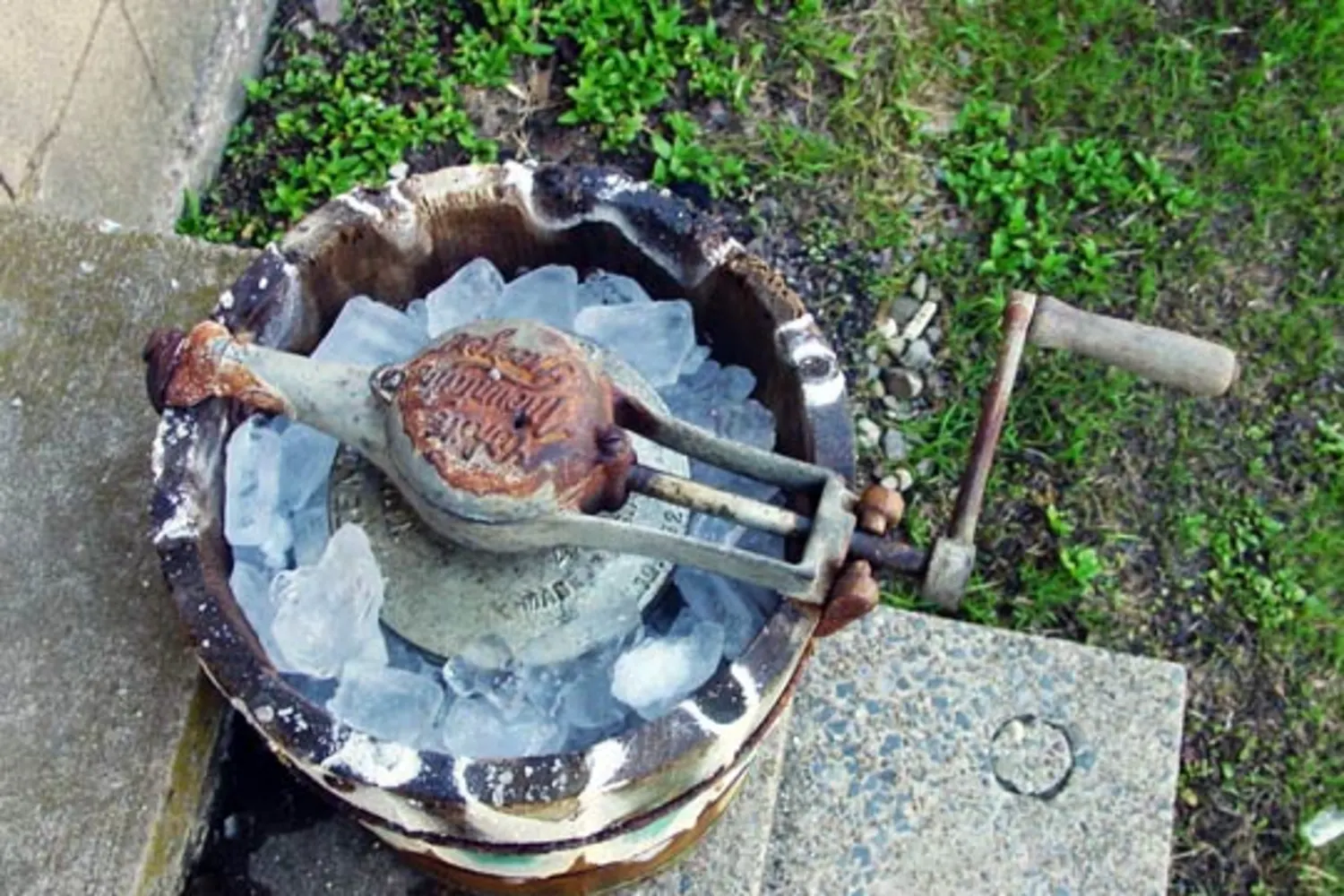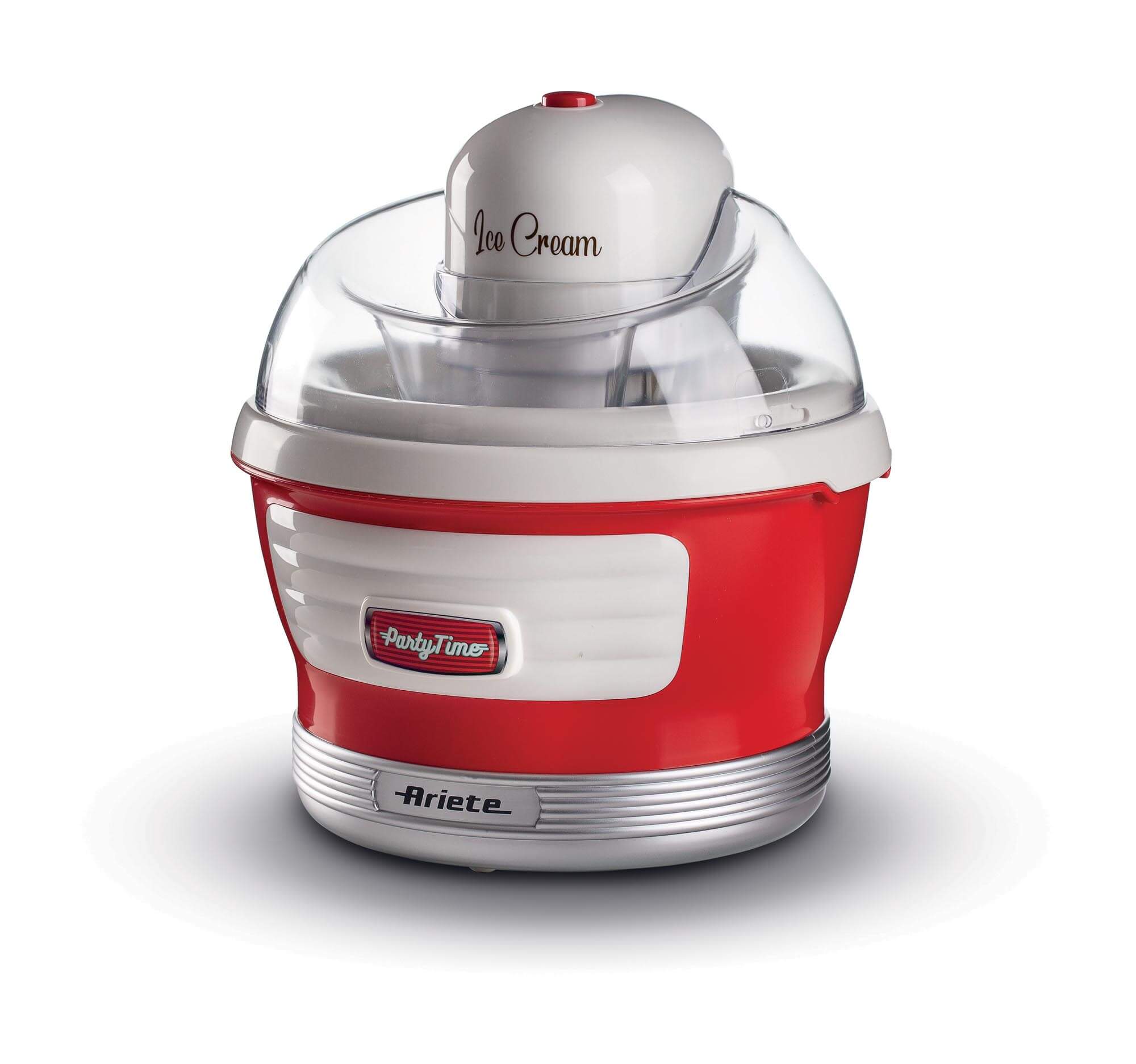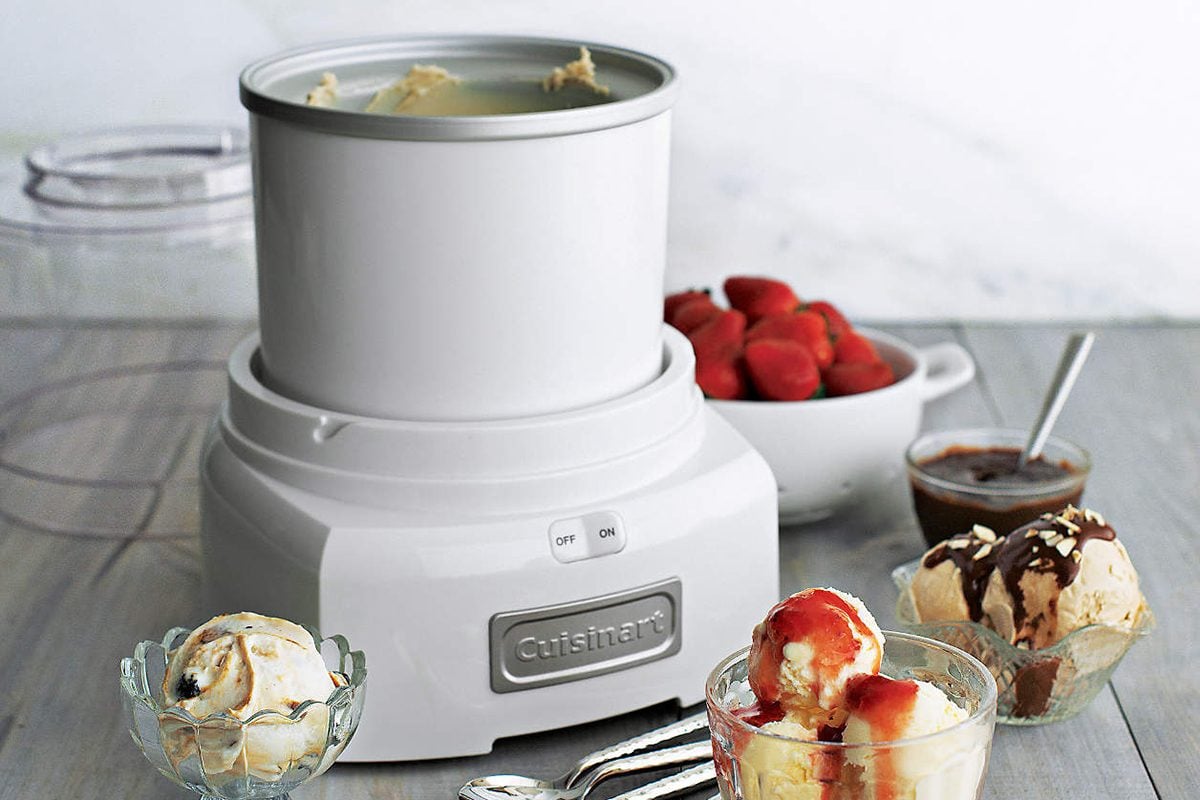Introduction
Welcome to the wonderful world of homemade ice cream! If you’re passionate about frozen treats, then investing in an ice cream maker is a great decision. Making ice cream from scratch allows you to experiment with flavors and create delicious desserts tailored to your taste buds. But did you know that salt plays a crucial role in the ice cream making process?
Salt is not just a seasoning for savory dishes; it also serves a specific purpose when it comes to making ice cream. When ice cream is being churned, it needs to remain at a consistent low temperature to freeze properly. This is where salt comes in. By adding salt to the ice surrounding the ice cream mixture, it lowers the temperature of the ice and enables it to freeze the mixture effectively.
In this article, we will delve into the importance of salt in making ice cream and discuss how to determine the right amount of salt to use with your ice cream maker. We will also provide some helpful tips and tricks to ensure your ice cream is churned to perfection.
So, if you’re ready to embark on a journey of frozen delights, let’s dive into the fascinating world of salt and ice cream makers!
The Role of Salt in Making Ice Cream
Have you ever wondered why salt is necessary when making ice cream? It may seem counterintuitive, but salt plays a critical role in the freezing process. When you add salt to the ice cream maker, it lowers the temperature of the ice, creating the perfect conditions for freezing the ice cream mixture.
To understand how salt works, we need to delve into the science of freezing point depression. Pure water freezes at 32°F (0°C), but when salt is added, it creates a solution with a lower freezing point. This is why icy roads are often salted in winter – the salt lowers the freezing point of the water and prevents it from turning into ice.
In the context of ice cream making, the freezing point depression caused by salt is crucial. The ice cream mixture contains water, sugar, cream, and other ingredients that need to freeze while being churned. By adding salt to the ice surrounding the ice cream container, the overall temperature decreases, causing the cream mixture to freeze properly.
Moreover, the salt in the ice cream maker prevents the ice from melting too quickly. When you churn the ice cream, the friction generates heat, which can cause the ice to melt. However, the salt acts as an insulator, ensuring that the ice remains solid and maintains a consistent low temperature throughout the churning process.
Without salt, the ice cream mixture would not freeze properly, resulting in a slushy and grainy consistency. The salt creates a controlled environment, allowing the ice cream base to freeze evenly and develop the smooth and creamy texture we all crave.
Now that we understand the role of salt in making ice cream, let’s explore the different types of salt that are commonly used in ice cream makers.
Types of Salt Used for Ice Cream Makers
When it comes to choosing the right salt for your ice cream maker, there are a few options to consider. Different types of salt have varying sizes and characteristics that can impact the freezing process and the final texture of your ice cream. Here are the most common types of salt used in ice cream makers:
- Rock Salt: Rock salt, also known as ice cream salt, is a coarse type of salt that is specifically designed for making ice cream. It is commonly found in large crystals and dissolves slowly, which helps to maintain a consistently low temperature. Traditional ice cream makers often require rock salt to create the necessary freezing conditions.
- Kosher Salt: Kosher salt is less coarse than rock salt and dissolves relatively quickly. It contains no additives, making it a popular option for those who prefer a purer form of salt. While kosher salt can be used in ice cream making, it may require a larger quantity to achieve the desired freezing point depression.
- Table Salt: Table salt is the most common type of salt found in households. It has fine grains and dissolves easily. While table salt can be used in a pinch, it is not recommended for ice cream making as it can melt the ice too quickly and affect the freezing process. However, if you have no other options, it can be used sparingly.
When selecting the type of salt for your ice cream maker, it is essential to check the manufacturer’s guidelines. Some ice cream makers may require specific types of salt to ensure optimal performance. Additionally, consider the size of the salt crystals and how quickly they dissolve, as this will impact the temperature and consistency of your ice cream.
Now that we have explored the different types of salt, let’s move on to understanding how to measure the amount of salt needed for your ice cream maker.
Understanding the Measurements: How Much Salt to Use
When it comes to adding salt to your ice cream maker, it’s important to strike the right balance. Using too little salt may not lower the temperature enough to freeze the ice cream, while using too much salt can result in an overly salty taste. So, how do you determine the right amount of salt to use?
The general guideline is to use about 1 part salt to 3 parts ice. This ratio ensures proper freezing and maintains the ideal temperature for the ice cream mixture. However, it is crucial to consider a few factors that may impact the quantity of salt you need:
- Type of Ice Cream Maker: Different types of ice cream makers have varying freezing capabilities. If you are using a traditional ice cream maker that requires rock salt, you may need to use slightly more salt compared to a modern electric ice cream maker with a built-in freezing system.
- Ambient Temperature: The temperature of the surrounding environment can affect the freezing process. If you are making ice cream on a hot summer day, you may need to add a bit more salt to compensate for the higher external temperature.
- Recipe and Flavor Profile: Consider the specific recipe and flavors you are using. Some recipes may call for additional ingredients that affect the freezing process. For example, alcoholic ingredients like liqueurs or extracts may require a bit more salt to freeze properly.
It’s important to note that the measurements provided are a guideline, and you may need to adjust the salt quantity based on your specific circumstances. Remember to refer to your ice cream maker’s manual for any specific guidelines or recommendations.
Now that we have a solid understanding of salt measurements, let’s move on to some helpful tips for adding salt to your ice cream maker effortlessly.
Factors to Consider When Determining the Amount of Salt
While there is a general guideline for how much salt to add to your ice cream maker, it’s important to consider certain factors that can influence the amount of salt needed. By taking these factors into account, you can ensure the perfect balance of saltiness and freezing temperature for your ice cream:
- Type of Ice Cream Maker: The type of ice cream maker you’re using can impact the amount of salt required. Traditional ice cream makers that require rock salt typically need a higher proportion of salt compared to modern, self-freezing models. Consider the specific instructions and recommendations provided by your ice cream maker’s manufacturer.
- Ice Cream Maker Capacity: The size and capacity of your ice cream maker play a role in determining the amount of salt needed. Larger ice cream makers may require more salt to create enough freezing power to properly freeze the ice cream mixture.
- Ingredients and Additives: The composition of your ice cream mixture can affect the freezing point and may require adjustments to the salt quantity. Ingredients like sugar, cream, and flavors impact the freezing process, so keep in mind any recipe variations or additives that might necessitate more or less salt.
- Ambient Temperature: The temperature of the environment in which you are making ice cream can influence the freezing process. If you are making ice cream in a hotter climate or during warm summer months, you may need to increase the amount of salt to counteract the higher external temperature.
- Personal Taste Preferences: Everyone has different preferences when it comes to saltiness. Some individuals prefer a subtle hint of salt, while others enjoy a more pronounced savory flavor. Adjust the amount of salt based on your personal taste preferences to achieve the desired balance in each batch of ice cream.
By considering these factors, you can fine-tune the amount of salt used in your ice cream maker, ensuring the perfect freeze and taste for your homemade frozen delights.
Now that we have explored the factors to consider, let’s move on to some helpful tips for adding salt to your ice cream maker like a pro.
Tips for Adding Salt to Your Ice Cream Maker
Adding salt to your ice cream maker requires a bit of precision to ensure optimal freezing and delicious results. Here are some essential tips to keep in mind when adding salt to your ice cream maker:
- Measure accurately: Use a measuring cup or spoon to accurately measure the amount of salt needed. This precision will help you maintain the right balance and prevent your ice cream from being too salty or under-frozen.
- Layer the ice and salt: When adding salt to the ice cream maker, it’s important to layer it between the ice. Start by adding a layer of ice, then sprinkle salt over it. Continue this layering process until reaching the desired quantity of ice. This ensures even distribution of salt throughout the ice cream maker.
- Avoid direct contact with the ice cream mixture: To prevent contamination, make sure the salt does not come into direct contact with the ice cream mixture. The salt is meant to lower the temperature of the ice, not mix with the ice cream base.
- Monitor the freezing process: Keep an eye on the freezing process and check the consistency of the ice cream regularly. Adjust the amount of salt or the duration of churning if necessary. Remember, different recipes and ambient conditions may require slight variations in the salt quantity and freezing time.
- Clean your ice cream maker: After using your ice cream maker, ensure that you clean it thoroughly. Salt can cause corrosion over time, so rinse the ice cream maker’s components with water and dry them properly to avoid any damage.
- Experiment with flavors: While salt plays a crucial role in freezing the ice cream, don’t forget to explore different flavor combinations. Add extracts, fruits, or other mix-ins to your ice cream base to create unique and delightful flavors. The salt will continue to do its job, ensuring the ice cream freezes properly regardless of the added flavors.
By following these tips, you’ll be able to add salt to your ice cream maker like a pro and achieve impeccable results with each batch of homemade ice cream.
Now that we’ve covered the essential tips, let’s take a look at some common mistakes to avoid when adding salt to your ice cream maker.
Common Mistakes to Avoid When Adding Salt
While adding salt to your ice cream maker is a crucial step in the freezing process, there are some common mistakes that can affect the outcome of your homemade ice cream. By being aware of these mistakes, you can avoid them and ensure the best results for your frozen treats. Here are some common mistakes to avoid:
- Using too much salt: It can be tempting to add more salt, thinking it will speed up the freezing process. However, using too much salt can result in an overly salty taste in your ice cream. Stick to the recommended measurements to maintain the perfect balance of flavors.
- Using the wrong type of salt: Not all salts are created equal when it comes to ice cream making. Using table salt instead of rock salt or kosher salt can affect the freezing process and may result in uneven freezing or melting ice cream.
- Mixing the salt with the ice cream mixture: Avoid letting the salt come into direct contact with the ice cream mixture. The purpose of the salt is to lower the temperature of the ice surrounding the container, not to mix with the ice cream base. This can lead to a salty and unpleasant texture in your ice cream.
- Adding salt too early or too late: Timing is crucial when adding salt to your ice cream maker. Adding it too early can lead to premature melting of the ice, while adding it too late may result in an improperly frozen ice cream mixture. Follow the instructions provided by your ice cream maker’s manufacturer for the best results.
- Skipping the layering process: Layering the ice and salt in your ice cream maker is essential for even distribution of the freezing power. Skipping this step may lead to uneven freezing and inconsistent results.
- Not cleaning the ice cream maker properly: After each use, take the time to clean your ice cream maker thoroughly. Salt can cause corrosion if left in contact with the machine, so make sure to rinse and dry the components properly to prevent any damage.
Avoiding these common mistakes will help you achieve the perfect texture and flavor in your homemade ice cream. With a bit of practice and attention to detail, you’ll be churning out delicious batches of ice cream in no time!
Now that we’ve explored the common mistakes, let’s wrap up our discussion on adding salt to your ice cream maker.
Conclusion
Salt plays a vital role in the art of making homemade ice cream. It lowers the freezing point, allowing the ice cream mixture to freeze properly during the churning process. The right amount of salt creates the ideal environment for achieving a smooth and creamy texture in your frozen treat.
When adding salt to your ice cream maker, it’s important to consider factors such as the type of ice cream maker, ambient temperature, recipe ingredients, and personal taste preferences. By understanding these factors and following the recommended measurements, you can ensure optimal freezing conditions and a delightful flavor profile.
Additionally, employing some essential tips can elevate your ice cream-making experience. Accurate measurement, layering of ice and salt, preventing direct contact with the ice cream mixture, monitoring the freezing process, and proper cleaning are key elements for success.
By avoiding common mistakes like using too much salt, using the wrong type of salt, and not properly cleaning the ice cream maker, you can maintain the integrity of your ice cream and achieve consistent, delicious results with every batch.
So, unleash your creativity, experiment with flavors, and enjoy the sweet rewards of homemade ice cream. With the right amount of salt and the perfect freezing conditions, you’ll be able to savor the delectable pleasure of your very own frozen creations.







